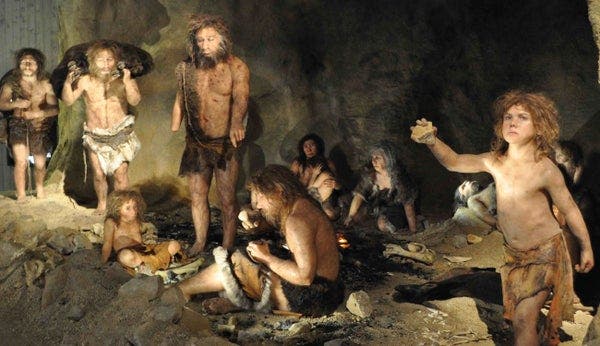
Infant mortality was huge in ancient times compared to nowadays when we have access to modern healthcare. It is thus reasonable to believe the farther back in time you go, the greater the proportion of babies who don’t make it past infancy. Indeed, examinations of remains from hunter-gatherer burial sites suggest that nearly half of all babies born in prehistoric times succumbed within the first year of their lives. But a recent study performed by researchers in Australia paints a strikingly different picture, concluding that previously reported mortality figures are likely very wrong.
Missing the forest for the trees
The work conducted by the researchers at the Australian National University is a great example of what happens when there is sampling bias, showing how looking at a single narrow piece of evidence can distort the context of the big picture.
“It has long been assumed that if there are a lot of deceased babies in a burial sample, then infant mortality must have been high,” lead author Dr. Clare McFadden, from the ANU School of Archaeology and Anthropology, said in a statement.
“Many have assumed that infant mortality was very high in the past in the absence of modern healthcare.”
“When we look at these burial samples, it actually tells us more about the number of babies that were born and tells us very little about the number of babies that were dying, which is counterintuitive to past perceptions.”
McFadden and colleagues combed through a massive dataset from the United Nations on infant mortality, fertility, and deaths occurring during infancy from 97 countries. This analysis showed that fertility — and not mortality rate — had a much greater influence on the proportion of deceased infants. The more infants born, the greater the fraction of infants that succumbed prematurely.
If that’s the case in our modern world, the same likely happened in ancient times as well, with the notable distinction that the magnitude of the effect was even greater. Based on the UN data, the researchers made an intellectual leap and concluded that physical burial samples from the last 10,000 years do not support the notion that infant mortality was as high as 40%, as some have previously claimed based on archaeological findings. In other words, although it may sound counterintuitive, the great number of infant burials actually reflects a high degree of fertility, which suggests that ancient parents had the resources and capabilities to raise a lot of children.
“Burial samples show no proof that a lot of babies were dying, but they do tell us a lot of babies were being born,” McFadden said.
“If mothers during that time were having a lot of babies, then it seems reasonable to suggest they were capable of caring for their young children.”
We still know very little about what motherhood was like thousands of years ago. When did women first become mothers and how many children did they have on average? Nobody knows and we’ll likely never find definite answers to these questions. Instead, we have a lot of assumptions, some more prone to errors than others.
McFadden hopes these insights change our entrenched perceptions surrounding our ancestors, which are often misrepresented as brutish. Today’s humans share the same emotional experiences as those from the dawn of history. She also wants to highlight the stories of women living in ancient times, whose stories have often occupied the background in favor of male-centered ones.
“We hear a lot of stories about conflict involving males and even narratives around colonization and expansion of populations tend to have a focus on men and I think it’s really important to be telling these stories of women in the past and what the female experience was like, including the roles they played in the community and as a mother,” Dr. McFadden said.
“We hope that further research, applied with the lens of our findings, will add to our understanding of infant care and motherhood in the past.”
The findings appeared in the American Journal of Biological Anthropology.









